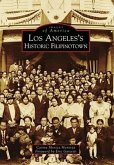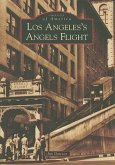Boyle Heights was one of the earliest residential areas outside of Los Angeles's original pueblo. From the 1920s through the 1950s, it was the city's most ethnically heterogeneous neighborhood with residents coming from such far-flung places as Mexico, Japan, England, Germany, Russia, and Armenia, as well as from the eastern, southern, and southwestern United States. Over the years, Boyle Heights has continued to be a focal point for new immigration. Transformed through the everyday interactions of its diverse residents as well as by political events occurring at the regional, national, and international levels, the neighborhood's historical and contemporary communities reflect the challenges and potential of living in a pluralistic society.
Hinweis: Dieser Artikel kann nur an eine deutsche Lieferadresse ausgeliefert werden.
Hinweis: Dieser Artikel kann nur an eine deutsche Lieferadresse ausgeliefert werden.








